It's Time to Thank our Blazing Stars, with: the Liatris genus
Happy Monday to all our Northeast Ohio Naturalists! This week’s going to be a hot one, so I hope you all stay hydrated and get plenty of vitamin D from that glowing orb in the sky. It’ll be waning to the winter sun before we know it!
This week let’s talk about Blazing Stars, or the Liatris genus. Even experts have trouble identifying the species within this group because their differences are subtle, and they LOVE to hybridize (or breed with members of other species). Though it's a tricky one, this is an important genus because it is an important food source for many animals! An abundance of pollinators will visit these plants for nectar, including tiger swallowtails, wood nymphs, monarchs, sulphurs, painted ladies, gray hairstreaks, Aphrodite fritillaries, red admirals, leaf-cutting bees, digger bees, long-horned bees, bumblebees, and hummingbirds (whew, that’s A LOT!). Some insects rely on other parts of the plant as a food source, including flower moth caterpillars, borer moth caterpillars, aphids, and sometimes mammals like rabbits, groundhogs, voles, and livestock. Blazing stars are said to be deer resistant, but we all know how deer get when they’re hungry!
Blazing stars grow from corms, which are swollen underground bulbs that a plant uses to survive its dormant period (In our situation, that’s winter). Corms look like bulbs, but they don’t have visible storage rings like bulbs do! The plant has a simple stem (or, a stem with no branches) that often has some amount of white hairs on it. The leaves are alternately attached to the stem, but they’re so smooshed together that they appear to have a whorled attachment. The leaves are narrow, lance-shaped, and are long towards the base of the plant and get shorter as you go up. Blazing stars have discoid flower heads of 5-60 purple to pinkish tubular flowers. Each tubular flower has 5 pointed lobes with 1-2 thread-like styles emerging from it. Thus, each flower resembles a small shooting star, where the lobes are the star and the style(s) are the blazing trail it leaves behind. Some blazing star species have sessile flower heads that lack a stalk and are attached directly to the stem. Others will be attached by short stalks.
According to the USDA PLANTS database, nine species of Blazing stars call Ohio home. However, only seven of these species are strongly confirmed on iNaturalist, and honestly, I would say that only 4 of those are relatively common in Cuyahoga Valley National Park. So, without further ado, let’s dive into the differences of those four species!
Note: Most of the information presented here is adapted from John Hilty’s Illinois Wildflowers online guide. His pages are amazing and thorough. I suggest checking it out some time! https://www.illinoiswildflowers.info/
Prairie blazing star (L. pycnostachya): look for the curly styles and outwardly curved bract scales
Prairie blazing star has thin, white hairs that cover its stem in a scattered or nonuniform growth pattern. Its flower heads have a cylindrical shape and are sessile with 5-10 flowers per head. Flowers will have 2 separate, curly styles. The bracts of the flower head form pointed scales, the tips of which are reddish-pink and curve outward slightly, giving the flower head’s base a fuzzy appearance from a distance. The prairie blazing star prefer moist, rich soils, but can also inhabit rockier soils as well.
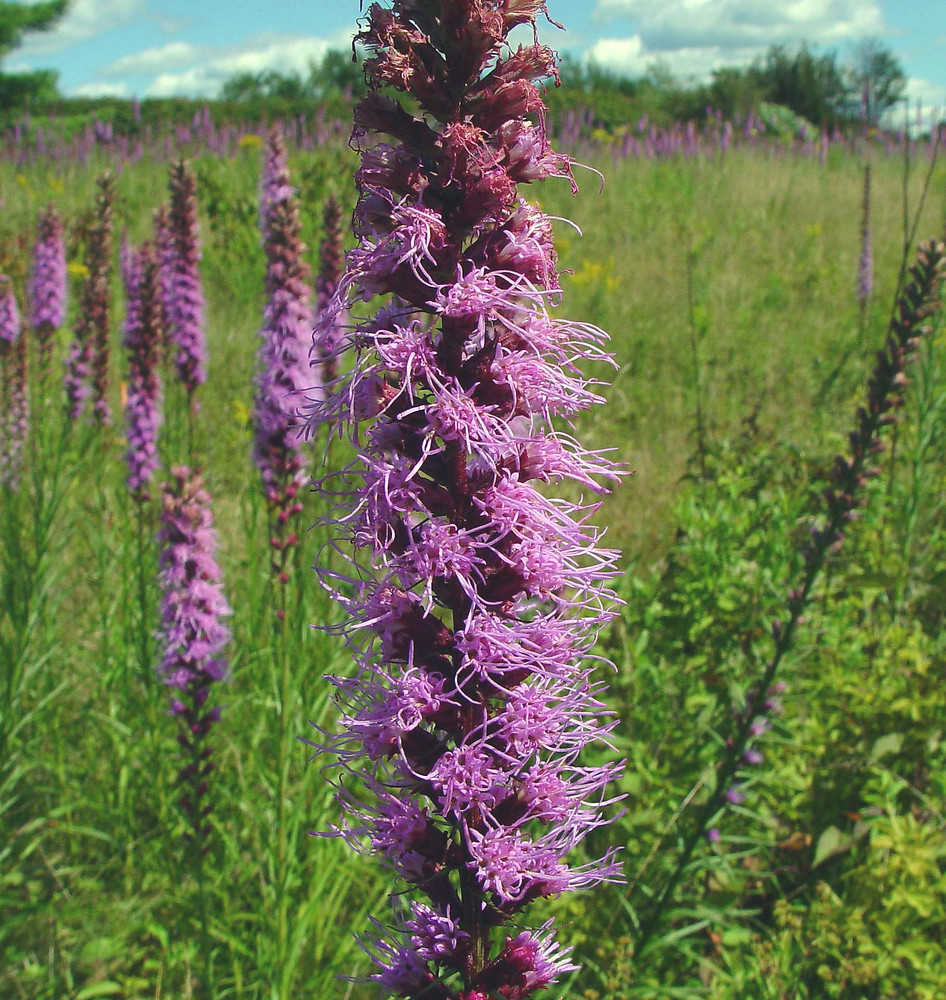

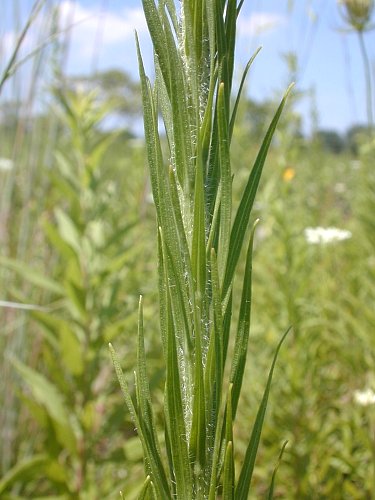
Left to right: L. pycnostachya plant, curled leaf bracts of L. pycnostahcya, and stem and leaves of L. pycnostachya
Credits: Arthur Haines, DenPro on their blog "Field Biology in Southeastern Ohio", and John Hilty, courtesy Illinois Wildflowers.
Dense blazing stars (L. spicata): look for the curly styles and the flattened bract scales
The dense blazing star can have a light green to purplish green stem with a sparse covering of short, white hairs. Flower heads are cylindrical and sessile with bracts that are closely pressed together. Their tips are pressed flat and do not curve outward like that of L. pycnostachya. Each flower head can contain 4-10 flowers, bearing two curly styles, just like L. pycnostachya. Dense blazing star prefers wetter soils (hence its other common name, Marsh blazing star). It prefers rich soils, but also enjoys soil that is slightly sandy. You’re likely to find this species on the edge of marshes, in grassy fens, and in prairie swales (or, low points in the prairie where water might collect).

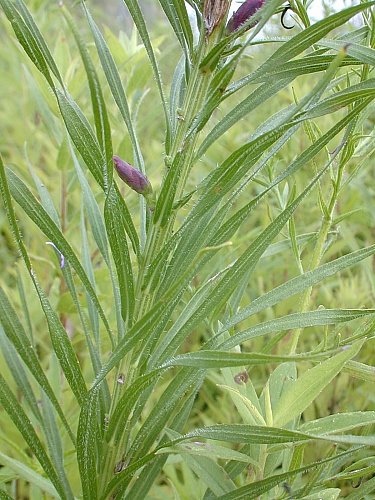
Left to right: L. spicata plant, L. spicata flattened bract scales, and L. spicata stem and leaves
Credits: H. Zell, courtesy Wikimedia Commons, DenPro on their blog "Field Biology in Southeastern Ohio", and John Hilty, courtesy Illinois Wildflowers.
Rough Blazing star (L. aspera): look for the densely hairy stems and button-shaped flower heads
The stem of rough blazing star can be green or dark red and bears a nice covering of short, stiff, white hairs. While the leaf bottoms of most blazing stars are hairy and the leaf margins smooth, L. aspera can also have ciliate leaf margins, where the edge of the leaf looks a bit hairy. Rough blazing stars have button-shaped flower heads with bracts that are closely pressed together, similar to those of L. spicata. You’ll find this species in drier prairie conditions in rich, sandy, or even gravelly soils.
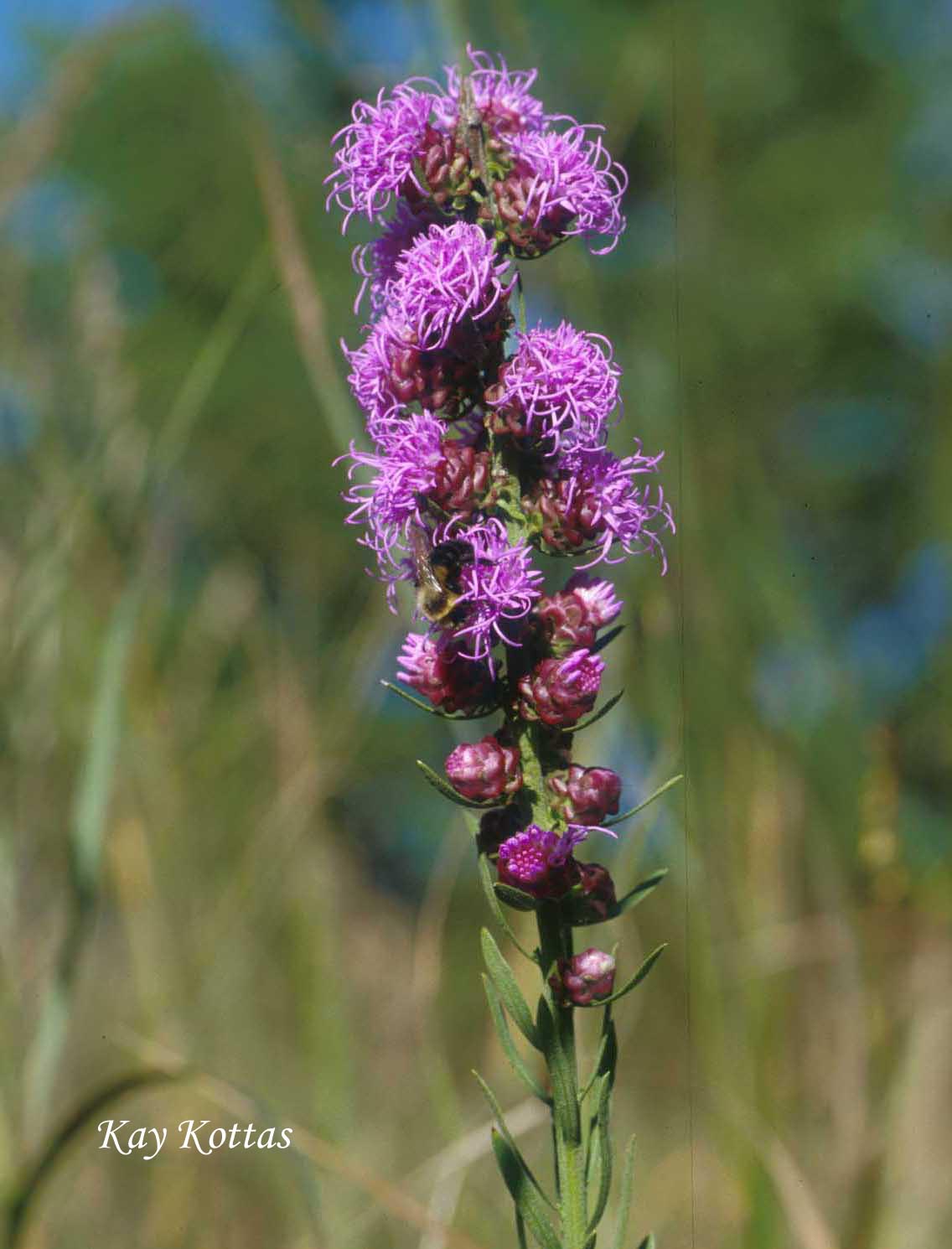
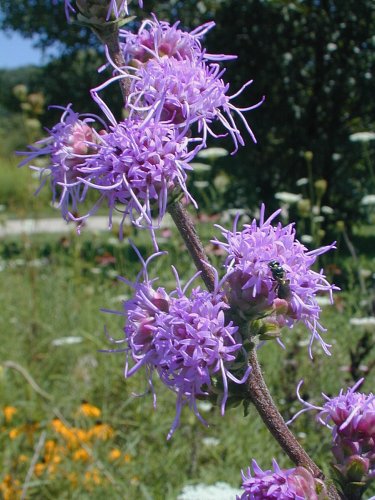
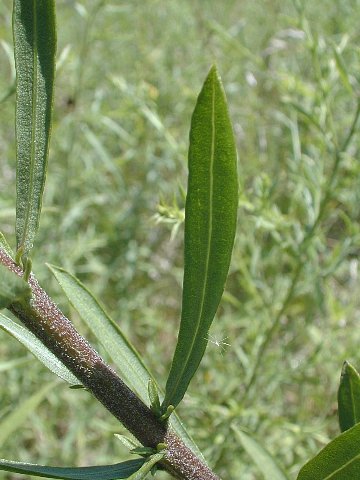
Left to right: L. aspera inflorescence, L. aspera inflorescence, L. aspera stem and leaves
Credits: Kay Kottas, and John Hilty, courtesy Illinois Wildflowers (for second 2 photos)
Scaly blazing star (L. squarrosa): look for the super spiky bracts and the curly-Q flower tips
Scaly blazing star’s stem is covered in thin, white hairs that look slightly longer than other Liatris species. These flower heads also have more of a button shape and contain 15-45 flowers. The 5 lobes on each flower are recurved (or, they curve backward), accentuating the tube aspect of the flowers and giving them a curly-Q-tipped shape. Scaly blazing star appears to have two styles emerging from its flowers, but really, each single style is bifurcated, or split in two. Most notably, the bracts of each flower head are pointed and the scales curve far outward, giving them a very spiky appearance. Scaly blazing star is rarer of the four species we’ve mentioned because they prefer high quality habitat in dry woods and prairies.

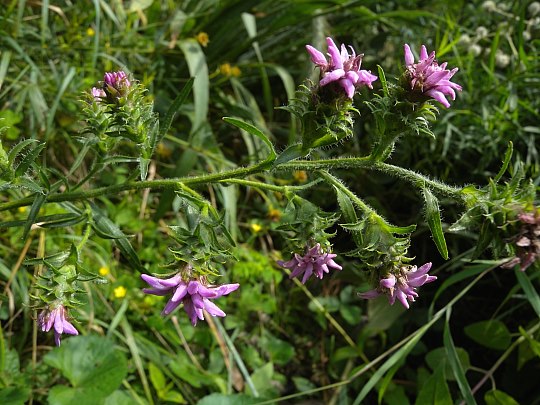
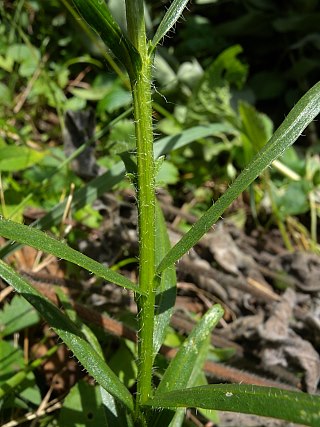
Left to right: L. squarrosa curly-Q flower tips, L. squarrosa super spiky bracts, and L. squarrosa stem and leaves
Credits: Susan Strine, and John Hilty, courtesy Illinois Wildflowers (for second 2 photos)
Hopefully, this journal post encourages you to get out there and identify those blazing stars! And don’t forget, Ohio is still home to another five blazing star species: cylindrical blazing star (L. cylindracea), dotted gayfeather (L. punctata), devil’s bite (L. scariosa), spherical gayfeather (L. spheroidea), and Appalachian blazing star (L. squarrulosa). Good luck out there everybody! Have some fun while it’s still warm out!




Comments
Add a Comment